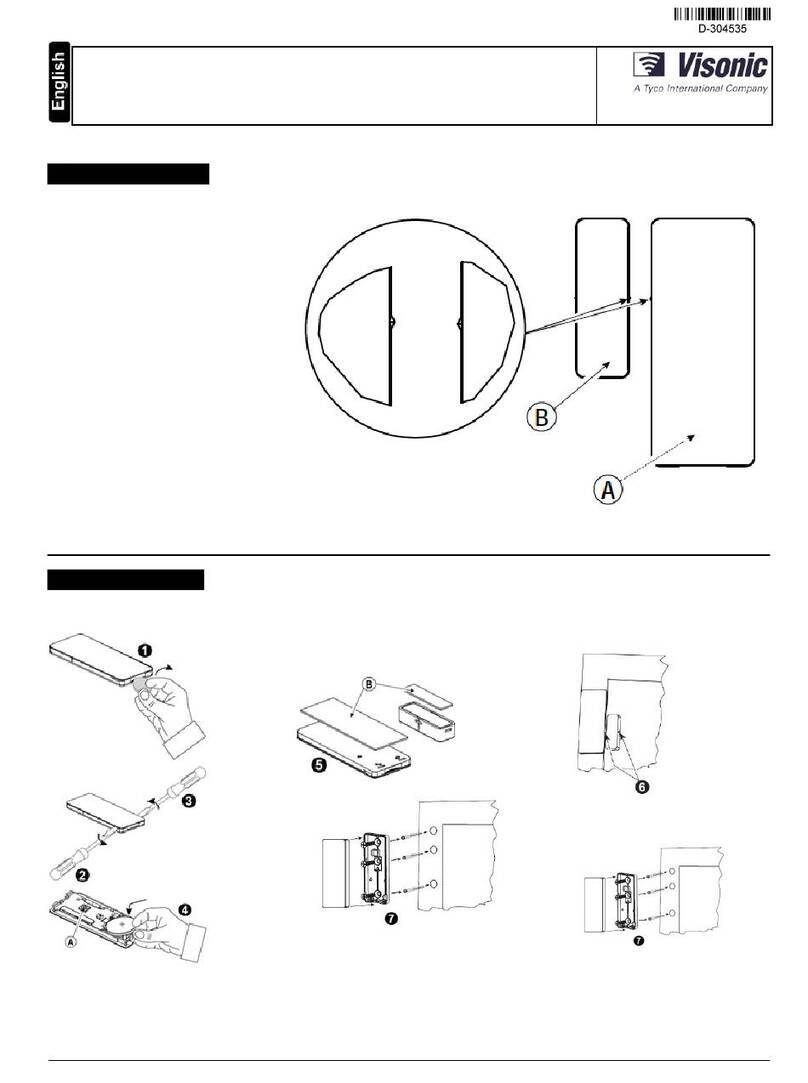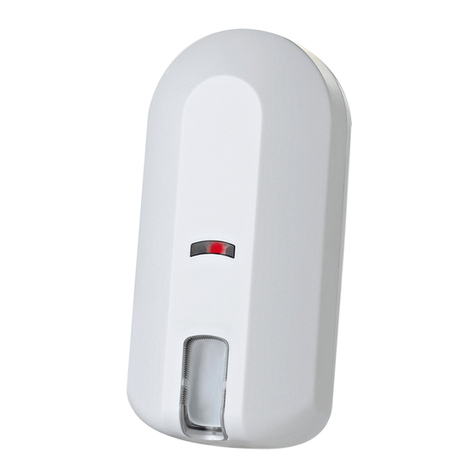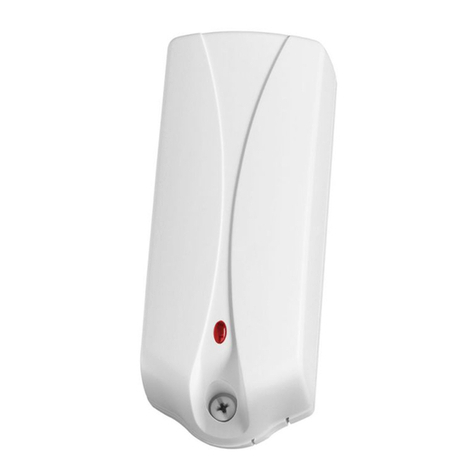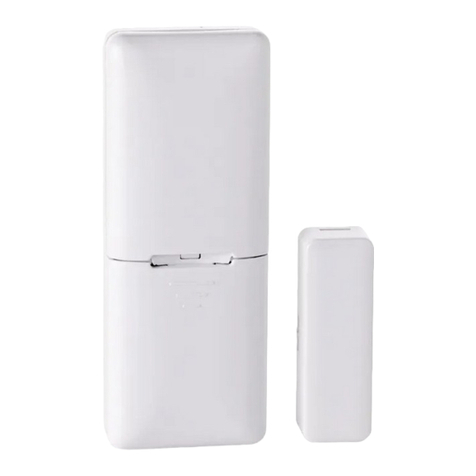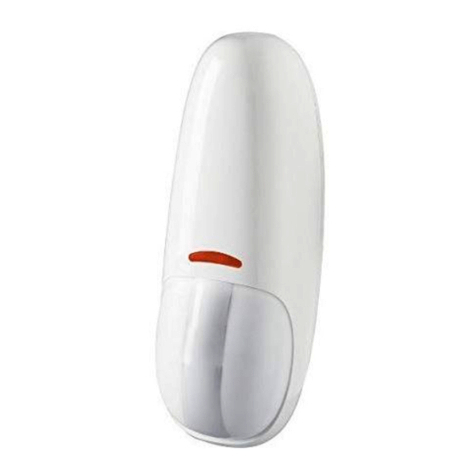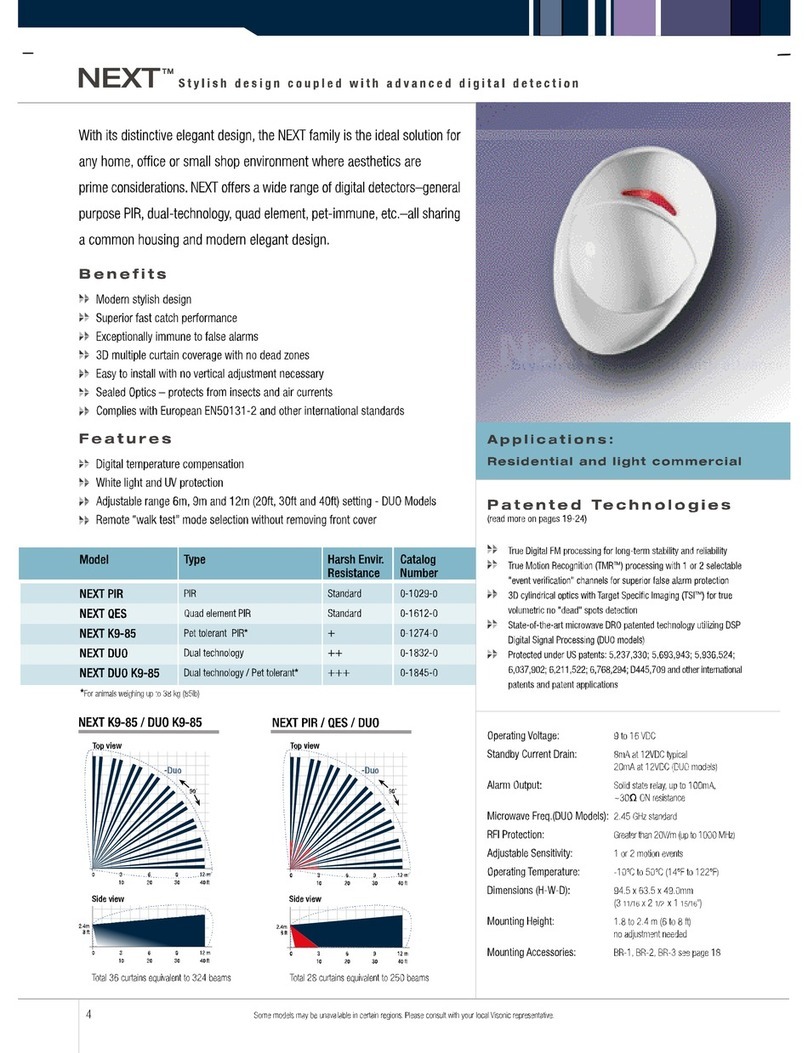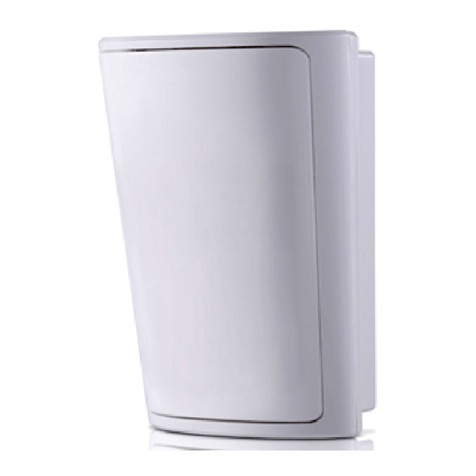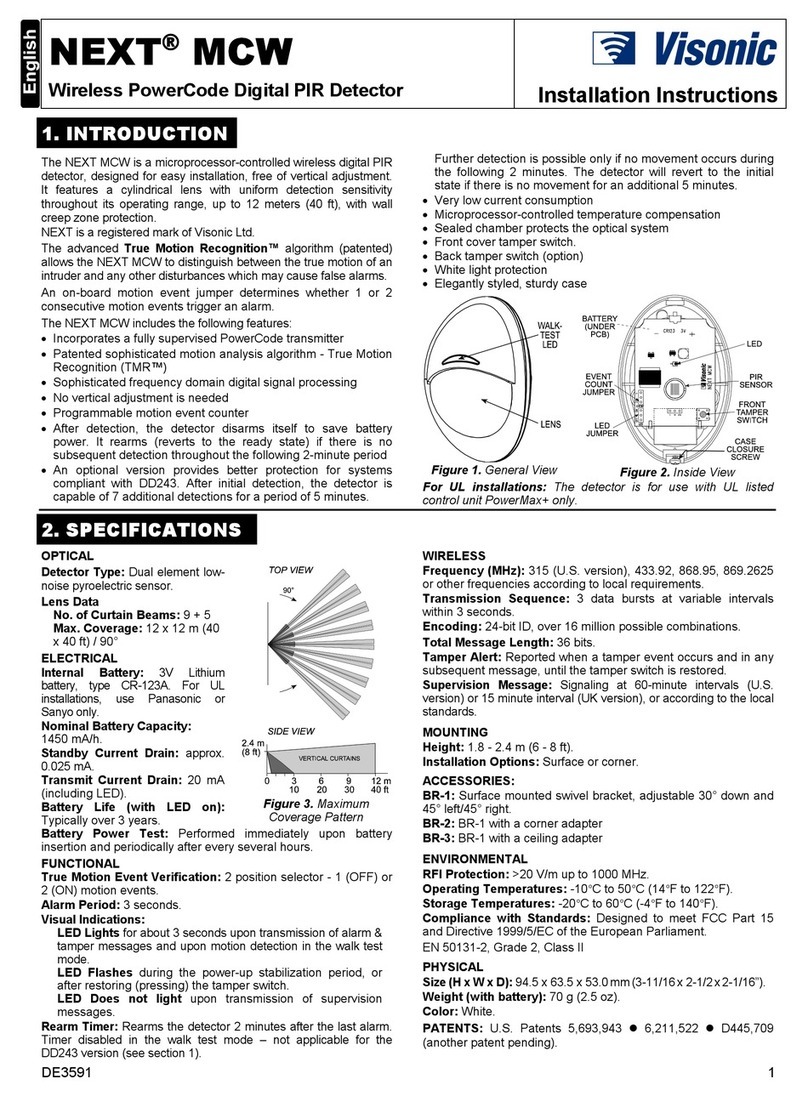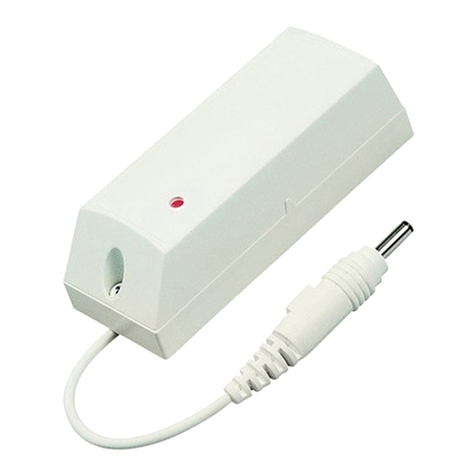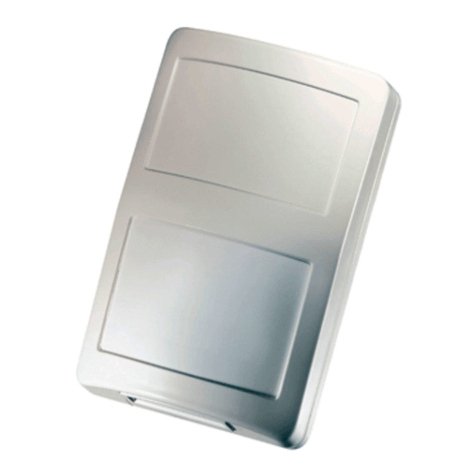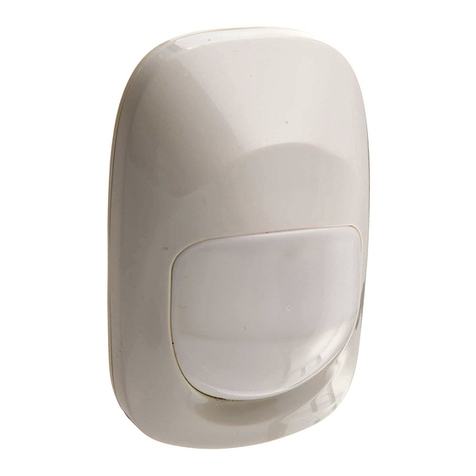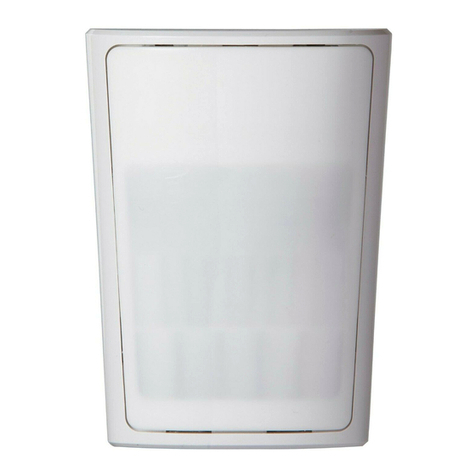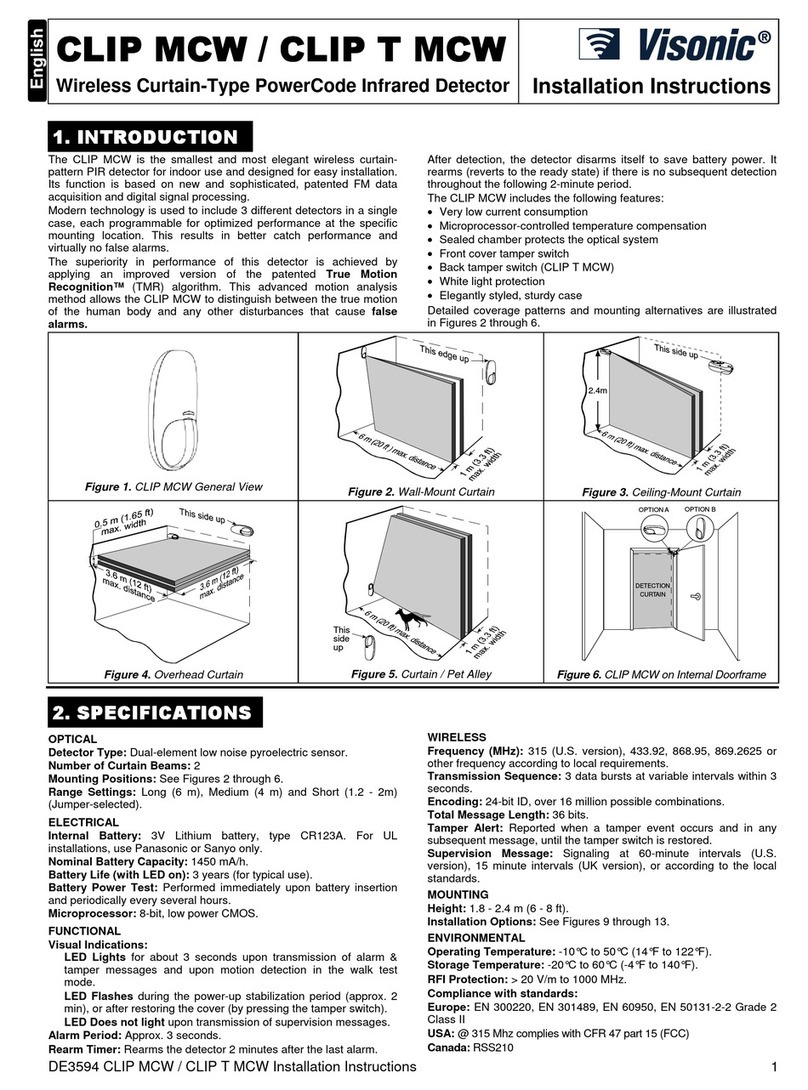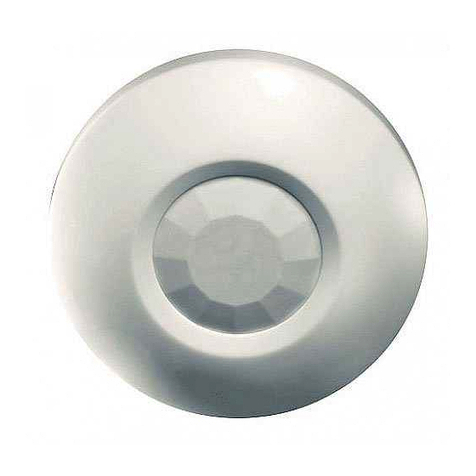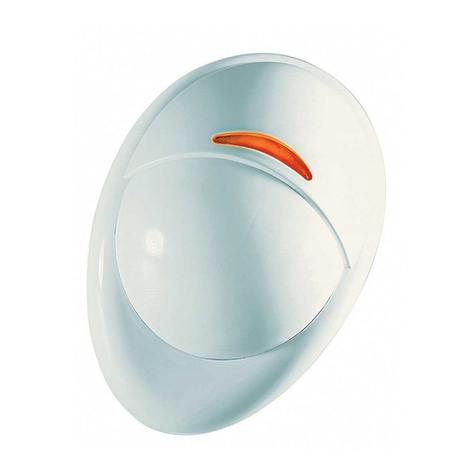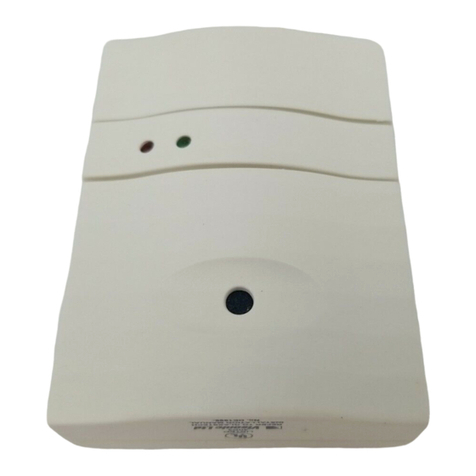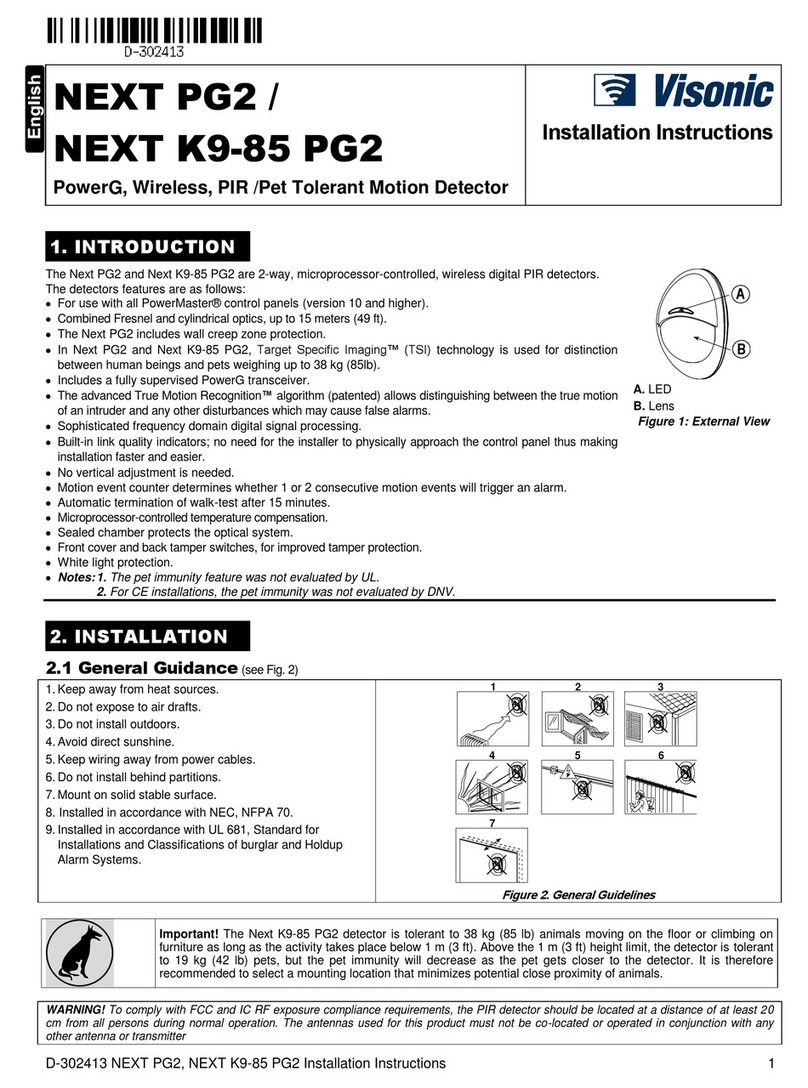2DE1240
2SWLRQDO6ZLYHO%UDFNHWV
The BR-1 is a swivel, surface-mounted bracket which allows
greater flexibility when choosing the direction at which the K-940
is pointed. The BR-1 is adjustable 30° downward and 45° left, 45°
right (see Figure 3).
The BR-2 is a swivel bracket kit for installation in room corners. It
consists of the BR-1 and a corner mounting adapter.
The BR-3 is a swivel bracket kit for installation on ceilings. It
consists of the BR-1 and a ceiling mounting adapter.
CAUTION! Tilting of the detector is not
allowed in pet immune applications. The
bracket should be used for horizontal
alignment only. The detector should be
kept vertical (perpendicular to the floor).
Figure 3. Optional Swivel Brackets
Having pointed the detector as desired, tighten the bracket screw
strongly, to prevent any further change of position.
:LULQJ
To route the wires into the detector, use either the wiring
knockouts at the bottom of the base, or the channel and its
associated knockout on the back of the base (see Figure 2). The
channel allows routing of wires from the ceiling under the detector
and then inside.
Connect wires to the terminal block as follows (see Figure 4):
A. Connect the TAMP. N.C. terminals to a normally closed
24-hour protection zone of the control panel. The tamper
contact will open when the cover is removed.
B. Connect the N.C. relay terminals to a normally closed burglar
protection zone of the control panel. Relay contacts will open
when motion is detected or during power loss.
For installations in Canada, the N.C. relay must be
connected to an end-of-line resistor supervised zone.
C. Connect the 12V (+) and (
±
)terminals to a 9 to 16 Volt DC
power source and check for correct polarity. The power supply
must have at least 4 hours of battery backup. The detector's
current drain is approximately 17 mA.
Figure 4. Terminal Block Wiring
9HUWLFDO$GMXVWPHQW
A. Pet-Immune Applications
To maintain maximum coverage range and
pet immunity, the vertical adjustment scale
must be adjusted in accordance with the
actual mounting height (refer to Figure 5).
Loosen the vertical adjustment screw and
slide the printed circuit board up or down until
the pointer shows the actual mounting height on the scale.
When done, re-tighten the screw well.
Figure 5. Vertical Adjustment
B. Pet-Free Locations
To obtain the best coverage possible where no pets are present,
mount the detector with a swivel bracket (see Para. 3.2) at any
desired height between 1.8 m (6 ft) and 2.4 m (8 ft). Then set the
vertical adjustment scale to the 2.4 m (8 ft) position and use the
bracket to tilt the detector 30
down.
7KH3XOVH&RXQWHU
The K-940 is equipped with a programmable pulse counter that
can be set to count 1 or 3 pulses, before activating the alarm
relay. To set the pulse counter, place the jumper at the desired
setting (1 or 3).
3 Pulses: This setting provides improved protection
against false alarms caused by all types of environ-
mental disturbances.
1 Pulse: This setting actually disables the pulse counter.
It should be used in high security installations, where the
alarm must be activated on the first detected pulse.
:DON7HVWLQJ
A. Apply power and allow five minutes for the unit to warm up
and stabilize.
B. Adjust the vertical pattern angle per Para. 3.4
C. Set the pulse counter per Para. 3.5.
D. Walk-test the entire coverage area by walking slowly across
the field of view (in opposite directions) and observing the
LED. The LED will light up whenever your motion is detected.
Allow 5 seconds between each test for the unit to stabilize.
Note: If the LED is disabled, you may use the control panel’s
visual and audible indicators to verify proper function of the
detector.
E. In pet immune applications, continue the test by sending the
pet into the protected area. Make sure it does not trigger the
detector by moving across the protected area and by climbing
on furniture within that area.
F. After testing, the LED can be disabled to prevent
unauthorized persons from tracing the coverage pattern. To
disable the LED, remove the jumper from the upper and
middle pins of the LED selector (ON) and place it across the
middle and lower pins (OFF).
Note: The range and coverage area should be checked at
least once a year by the installer. To assure proper continuous
functioning, the user should be instructed to perform a walk
test at the far end of the coverage pattern to assure an alarm
signal prior to each time the alarm system is armed.
